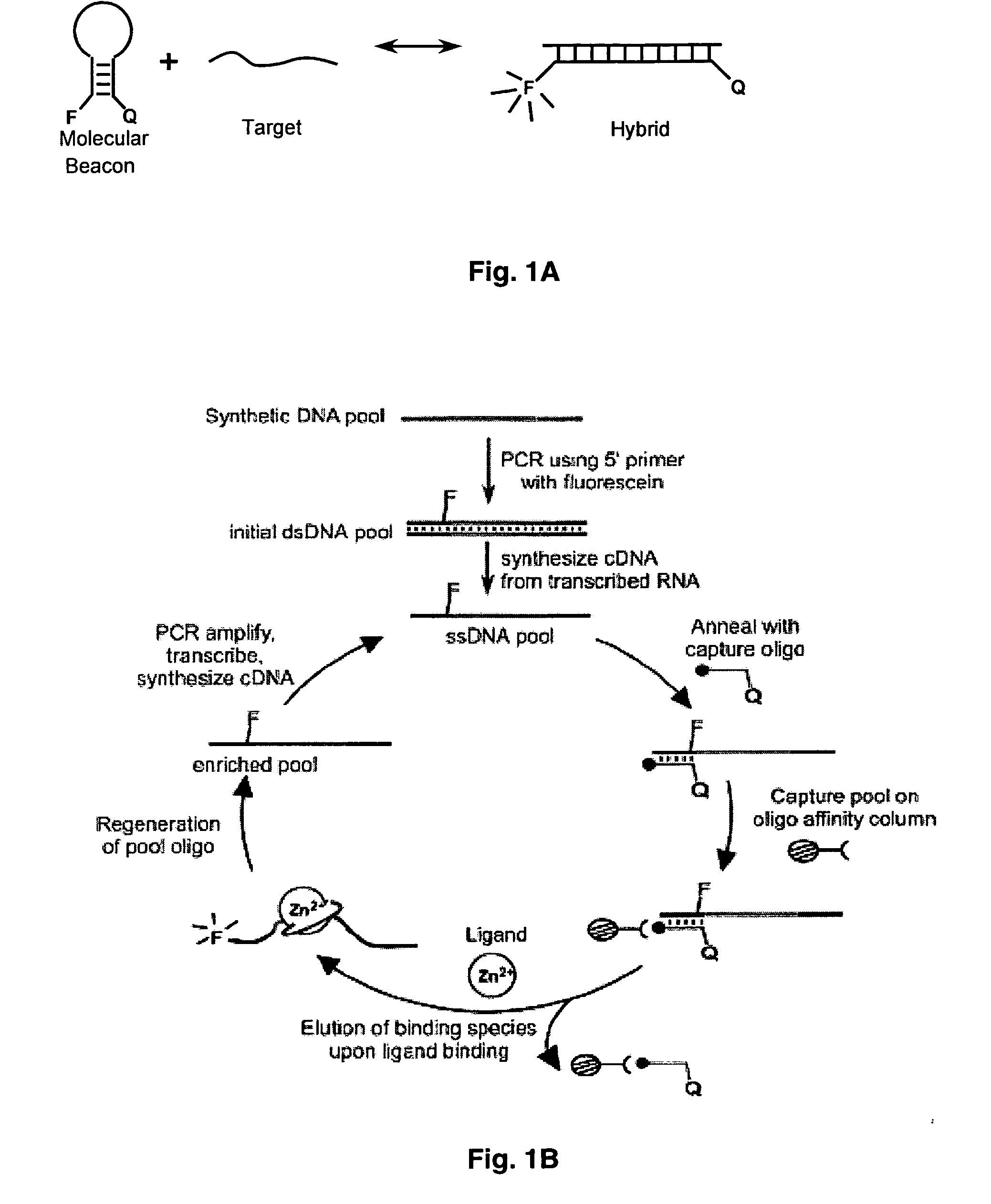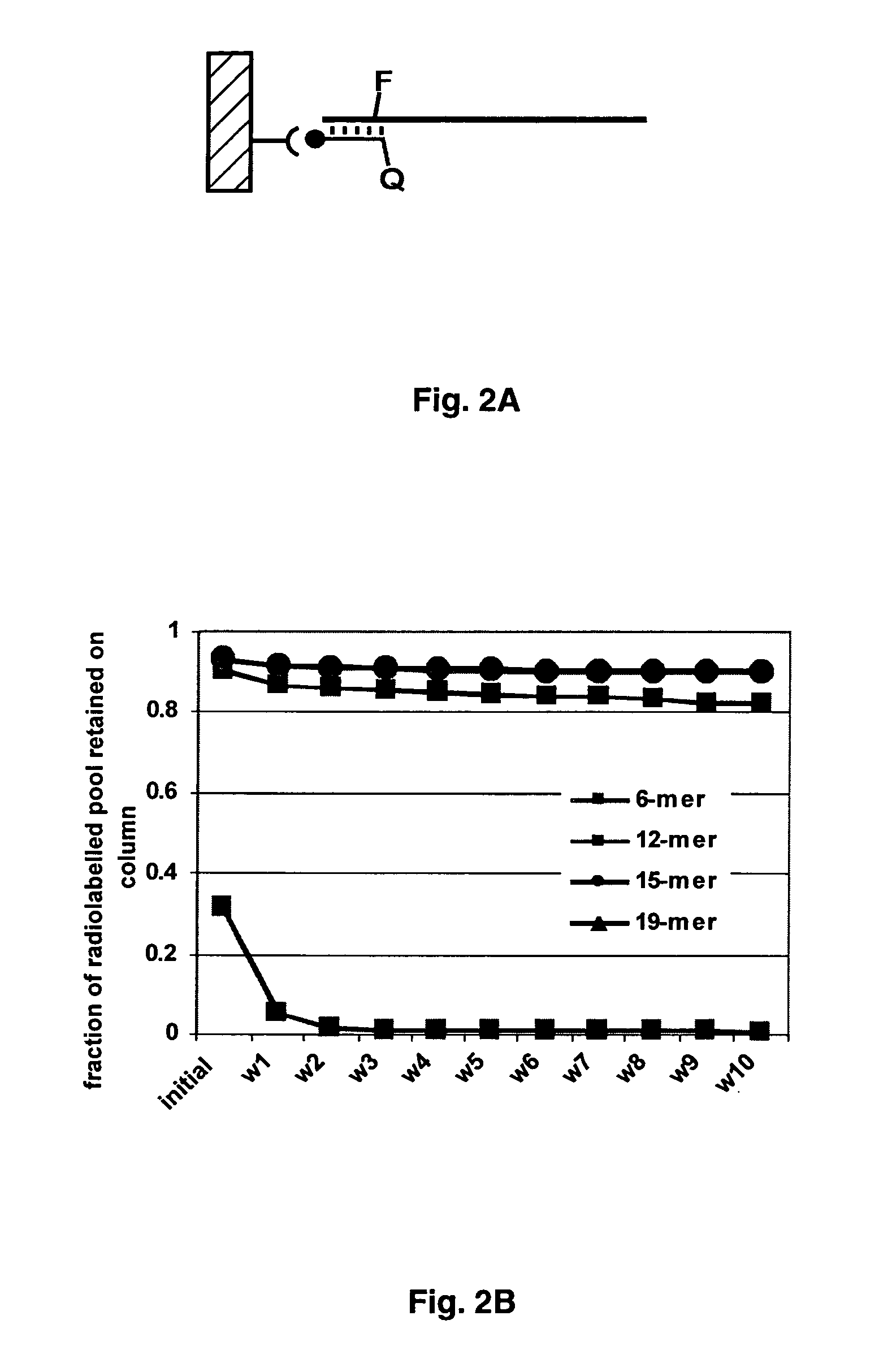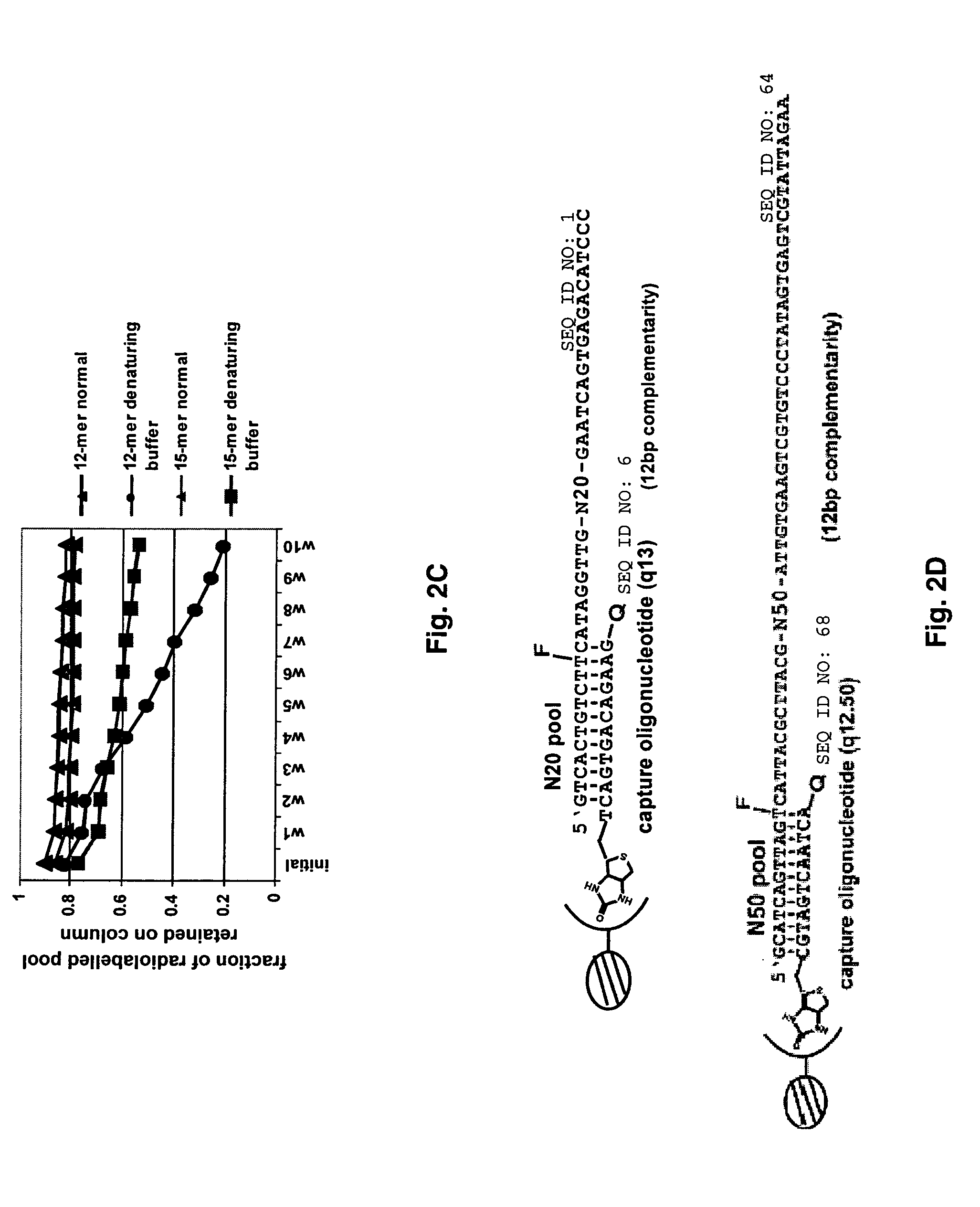In vitro selection of aptamer beacons
- Summary
- Abstract
- Description
- Claims
- Application Information
AI Technical Summary
Benefits of technology
Problems solved by technology
Method used
Image
Examples
example 1
[0082] All oligonucleotides were either made using an Expedite 8909 DNA synthesizer PE Biosystems (Foster City, Calif.) using synthesis reagents purchased from Glen Research (Sterling, Va.) or were ordered from Integrated DNA Technologies (Coralville, Iowa). Synthetic techniques use reported methodologies (32, 74).
N20 ssDNA Pool
[0083] A single-stranded DNA pool containing twenty randomized positions N20 (5′-GTCACTGTCTTCATAGGTTG-N20-GAATCAGTGAGACATCCC 3′) (SEQ ID NO: 1) was synthesized and was used as a starting point for in vitro selection. The pool was amplified using primers 20n.20 (5′-GTCACTGTCTTCATAGGTTG-3′) (SEQ ID NO: 2) and 38.20 (5′-TTCTAATACGACTCACTATAGGGATGTCTCACTGATTC-3′) (SEQ ID NO: 3), where the underlined residues indicate the non-transcribed portions of a T7 RNA polymerase promoter. A primer that contained biotin at its 5′ end, 18.20 (5′ Biotin-GGGATGTCTCACTGATTC 3′) (SEQ ID NO: 4), was used instead of 38.20 during later rounds of selection.
[0084] I...
example 2
DNA Pool Construction
[0094] Single-stranded N20 or N50 fluorescently labeled DNA pools were generated by a combination of chemical synthesis, PCR amplification, in vitro transcription, and reverse transcription.
N20 Pool
[0095] Following chemical synthesis, the N20 DNA pool was purified on an 8% denaturing polyacrylamide gel. The gel-purified pool, 32 micrograms, was amplified in a 25 ml PCR using the non-fluoresceinated primers 20n.20 and 38.20. Only 15% of the initial pool could be extended by Taq DNA polymerase. However, since the theoretical pool size was relatively small (420=1.1*1012 molecules), there should have been an average 130 copies of each species in the pool. The PCR yielded over 2,000 pool equivalents.
[0096] Primer 38.20 contained a T7 RNA polymerase promoter and sixty-five pool equivalents were transcribed using the Ampliscribe T7 In vitro Transcription kit (Epicenter Technologies, Madison, Wis.). The resultant RNA was gel-purified on an 8% denaturing polyacryla...
example 3
Optimization of Capture Oligonucleotide Length
[0098] Oligonucleotide affinity columns of different lengths were constructed, and their abilities to capture and release DNA pools containing complementary constant regions were determined. The nascent, single-stranded DNA pool was 5′ end-labeled with T4 polynucleotide kinase (Invitrogen, Carlsbad, Calif.) and [γ-32P]ATP (2.0 mCi, 7000 Ci / mmol, ICN Biomedicals, Costa Mesa, Calif.). Following gel purification, 50 pmoles of the labeled pool were annealed with 100 pmoles of the biotinylated capture oligonucleotide 7oa.20 in a 20 μl reaction volume. The annealing reaction was heated at 94° C. for 30 sec and 45° C. for 90 sec and was then cooled to room temperature. The annealing reaction was diluted to 500 μl using binding buffer (20 mM Tris, pH 7.5, 150 mM NaCl, 10 mM MgCl2) and the bound pool was captured on streptavidin-agarose (Sigma-Aldrich, St. Louis, Mo.) over a period of 25 minutes (FIG. 2A).
[0099] The streptavidin-agarose was tr...
PUM
| Property | Measurement | Unit |
|---|---|---|
| Molar ratio | aaaaa | aaaaa |
Abstract
Description
Claims
Application Information
 Login to view more
Login to view more - R&D Engineer
- R&D Manager
- IP Professional
- Industry Leading Data Capabilities
- Powerful AI technology
- Patent DNA Extraction
Browse by: Latest US Patents, China's latest patents, Technical Efficacy Thesaurus, Application Domain, Technology Topic.
© 2024 PatSnap. All rights reserved.Legal|Privacy policy|Modern Slavery Act Transparency Statement|Sitemap



